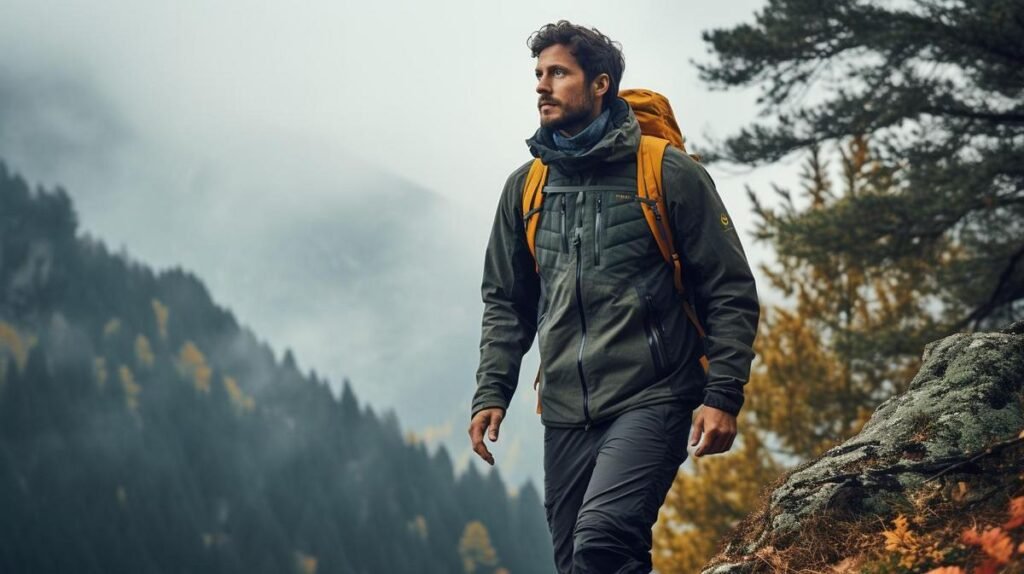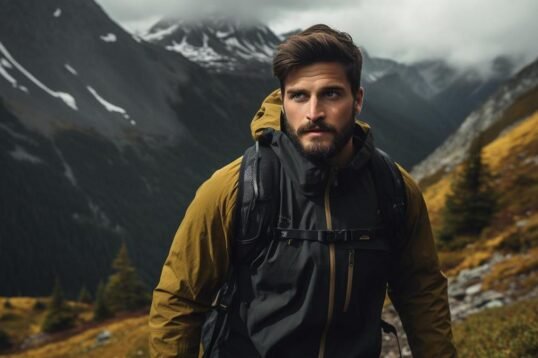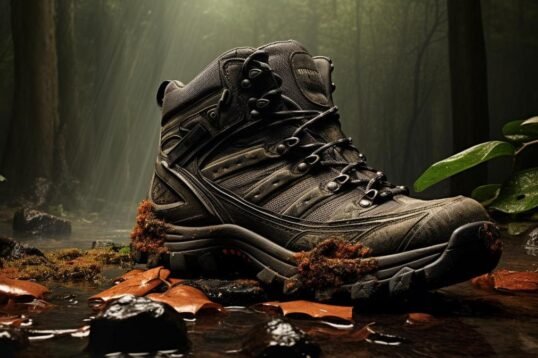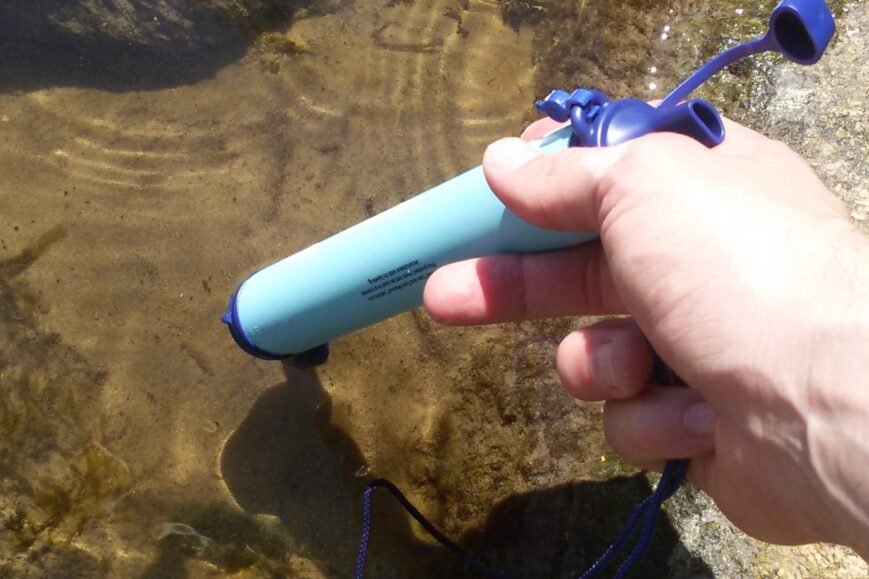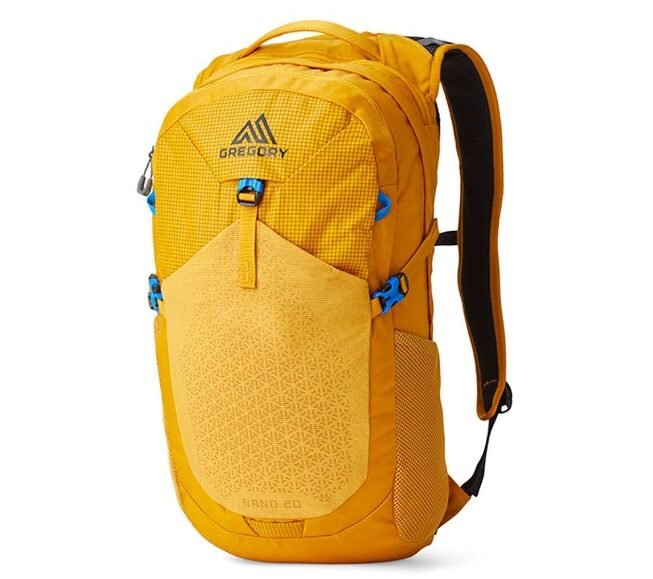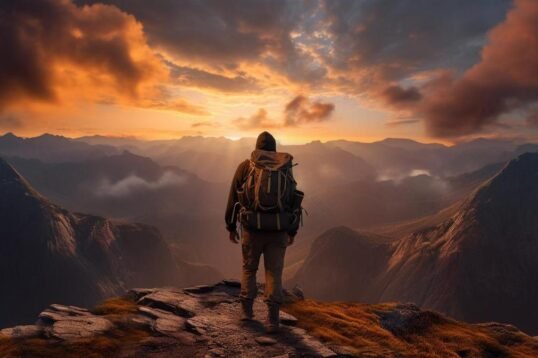- Essential hiking outfit layers: moisture-wicking base, insulating mid-layer, wind/rain protective outer layer; avoid cotton, choose synthetic or wool.
- Technical apparel: designed for performance with features like stretchability, breathability, and water resistance.
- Durability in hiking clothing: choose abrasion-resistant, well-seamed garments that last and are cost-effective over time.
- Appropriate attire: ensure proper fit for comfort and ease of movement; select styles and fabrics that suit weather conditions.
- Layering: manage body temperature and comfort with layers you can add or remove; adapt layers to the environment.
- Breathability: select clothes that allow moisture control and ventilation; balance waterproofing with breathability.
- Weather-appropriate gear: lightweight and sun-protective for summer; insulating, waterproof, and windproof for winter; adaptable layers for spring/fall.
- Moisture-wicking fabrics: essential for staying dry; opt for materials like polyester, nylon, or wool.
- Shoes: pick hiking boots or shoes based on trail difficulty; prioritize fit, support, and terrain suitability; don’t forget moisture-wicking socks.
- Environment-specific clothes: choose your hiking attire based on the destination’s climate; incorporate versatile layers and ventilation features.
Ready for your next outdoor adventure? Picking the right clothes is key! We all want to look good, but when it’s time to hit the trails, comfort beats style. Start with layers – a quick-dry base, a cozy middle, and a tough outer shell. Make sure your shoes fit the trek. Keep it simple – focus on fabrics that last and pieces that protect. Let’s dive into what you really need for that perfect hiking outfit.
What Are the Essential Components of a Hiking Outfit?
When you go hiking, wear comfy and strong clothes. Your hiking outfit should have a few key layers. You need a base layer that wicks sweat away from your body. A mid-layer keeps you warm. For the outer layer, choose something that shields you from wind or rain. Always pick function over fashion on the trails.
Good hiking clothes match your activity level and weather. Dress code for hiking? No real rules, but think about safety and comfort. This means no jeans or cotton tees. They get wet and stay wet. Synthetic or wool fabrics work best for keeping you comfy. These materials dry fast and manage body heat well.
Your hiking shoes should give grip and support. They must fit well to avoid blisters and aches. Also, pack a hat, gloves, and a scarf. These help in cold or sunny weather.
Remember, comfort and safety come before looking good. But that doesn’t mean hiking clothes can’t be cool. Today, they come in many styles and colors. You can look great and stay safe out on your hike.
How Important Is Technical Apparel in Your Hiking Wardrobe?
When you dress a hiker, think “tech.” This means gear that’s built to help you face the wilds. It’s not just about looks. The gear must work hard. Let’s get into the “what” and “why” of technical clothing for the trails.
Defining Technical Apparel: What Makes Clothing ‘Technical’?
Technical apparel uses smart design and materials. This combo boosts performance. Hiking gear with such tech keeps you dry, safe, and comfy on the trail. The right coat can shed water, a shirt can help sweat dry quickly, and pants can let you move without a hitch.
The Role of Technology in Hiking Apparel
Innovative features in your gear can make all the difference. Fabrics can stretch, breathe, and stand up to hard use. Shoes can grip the earth like a root. All these are thanks to tech that’s pushed the limits. It feels like a boost as you climb and trek.
Weatherproofing: Staying Dry with the Right Gear
Ever got caught in a downpour? Not fun, right? With the right tech wear, you won’t feel a thing. Jackets guard you from rain but still let your body breathe. That way, even if the skies open up, your hike goes on.
Comfort Tech: Fabrics that Move with You
You jump, climb, and reach. Your clothes need to keep up. Look for gear that hugs and flexes with you. It’s almost like you’re not wearing anything at all, but better.
Safety Features: Reflective and High-Visibility Options
In low light, you need to be seen. Clothes with reflective bits can catch the light. They let others spot you from far off. This could be key if you’re hiking as the day fades or in foggy spots.
Remember, tech hiking apparel is not a luxury, it’s your partner in exploring the wilds. It’s about making sure that your adventures are safe, dry, and as comfortable as possible, letting you focus on the climb, the view, and the thrill.
Why Should Durability Be a Priority in Choosing Hiking Clothing?
Durable hiking clothing can last many trips. It’s tough and handles wear well. Abrasion-resistant gear fights damage from rocks and branches. Clothes with strong fabric and reinforcements at stress points are key. They are less likely to rip when you pass through rough spots.
Fabric strength matters. Strong weave means longer life for your clothes. Check for added patches on knees and elbows. These spots can tear easily, so extra cloth helps. When picking clothes, weigh the cost against how long they’ll last. Check the seams and zippers, too. They should hold tight when you pull.
Garment tests can show toughness. Pull and stretch the clothes when you shop. Good gear bounces back and keeps its shape. Look for reviews about how the clothes hold up. People who hike a lot can tell you if gear lasts. Remember, buying cheap means you might buy more often. Investing in quality can save you money over time.
What Constitutes Comfortable and Appropriate Trekking Attire?
How do I look cute hiking? Pick clothes that fit well and suit your style. Comfort and style can live together in hiking gear. Find clothes that let you move and look good, too. A proper fit means you can trek without tight spots or baggy parts. This helps you hike well and feel free.
The right fit is key for moving easily on trails. Clothes too tight pinch and hold you back. Too loose, and they catch on to things. A good fit gives your limbs free swing and stretch.
For trekking in the sun or rain, choose special clothes. Some keep you cool, others warm. You want gear that shields you from the wind and wet but also breathes to let out sweat.
Everyone likes different things in hiking clothes. What feels good to you is what matters. Some like snug gear, while others prefer it loose. Pick what feels best on your skin and helps you hike without fuss.
Remember, no one outfit fits all hikes. Think about where you walk, hot or cold, dry or damp. Then pick the clothes that match. Comfort starts with the right gear for the right place.
How Do I Choose the Right Layers for My Hiking Trip?
How do you dress a hiker? Start with good base layers. You need to manage sweat to stay comfy. Choose fabrics that pull moisture from your skin. This keeps you dry and warm. For cold trips, add a fleece or wool mid-layer. They trap heat to keep you cozy. Facing wind or rain? Top off with a waterproof jacket. That’s your shield against harsh weather.
When it’s warm, you might just need a light jacket or vest. Cold climates demand more insulation. In these spots, puffier jackets are your best friends. They lock in the warmth you need. Climates can change on the trail, so be ready. Pack layers you can peel off or put on fast. For really hot spots, wear light colors. They reflect the sun better. In the chill, go for dark clothes. They soak up the sun to keep you warmer.
Remember, layering is a must. It’s not just about staying warm or cool. It’s also keeping dry and safe from the sun and wind. Check the weather before you go. Think about how long you’ll be out. Bring extra layers just in case. Your comfort counts on it. And so does your safety. A happy hiker is a smartly dressed one. So suit up right, and you’ll enjoy every step!
Why Is Breathability Key to Hiking Clothes Selection?
When you hike, clothes need to let your skin breathe. This stops sweat, keeps you comfy, and helps you stay cool or warm as needed. Let’s dive into why that’s so crucial.
Breathability vs. Waterproofing: Finding the Balance
You might think stuff that keeps water out is best for hiking. But if it’s not breathable, you’ll get wet inside from sweat. Look for gear that does both: waterproof but lets air pass.
Ventilation Features: Pit Zips and Mesh Panels
Some clothes have zip openings under the arms or mesh parts. These are for extra air. When it gets hot or you climb hills, unzip or rely on mesh to cool off.
Recognizing Breathable Material: Tags and Terms to Look For
On tags, words like ‘breathable’ show the fabric lets air through. Other terms are ‘moisture-wicking’ or ‘ventilated’. Remember those words when you shop for hiking gear. They mean your clothes will move to sweat away and help with airflow.
Breathable hiking fabrics are key because they adjust to your body heat and the weather outside. They can cool you down or keep warmth in. Make sure you have clothes that let your skin breathe, no matter where you hike or what the weather’s like. Dynamic hiking gear for changing conditions is the best choice. It keeps you ready for anything on the trail.
How Can I Dress Appropriately for Different Weather Conditions?
What should you wear hiking in summer? Pick light, sun-protective clothes. Summertime on the trails calls for lightweight gear to keep cool. Clothes should shield you from the sun’s rays, too. Long sleeves and pants made of thin material work well. A hat with a wide brim will protect your face and neck.
What do you wear hiking in winter? You need insulating layers and pieces that fend off water and wind. Cold weather hikes demand you stay warm and dry. Start with a base layer that traps body heat. Add a fleece or wool middle layer for extra warmth. Finish with a waterproof and windproof jacket.
What about spring and fall? You must adapt to these seasons’ changing conditions. These seasons mix warm days with cold snaps. Layers are key. Start with a tee or base layer. Bring a fleece and a light jacket for when it’s cooler. This way, you can add or remove layers as the day goes on.
What accessories are important for different weather? You need the right extras for the season. In summer, wear a sun hat and glasses. Winter calls for thermal socks and gloves. Accessories like these ensure comfort and safety. In variable weather, bring items for both warm and cool conditions.
Remember these tips for weather-appropriate hiking gear and changes. It means you’re ready for any trail, any time.
What Are the Benefits of Moisture-Wicking Fabrics in Hiking Attire?
Why pick moisture-wicking hiking attire? It keeps you dry and comfy. This fabric pulls sweat away from your skin. It helps in keeping you cool in heat, and warm when it’s cold.
Let’s start with the science behind it. Moisture-wicking fabrics are made to move sweat. They move it from your body to the fabric’s surface. There, sweat can easily evaporate. This means you stay dry on the trail. Now, which is better: natural or synthetic materials? Synthetic fibers are often better at this. Think about polyester or nylon. They dry fast and wick moisture well. But natural fibers like wool can also wick moisture. They give warmth and control odors too.
What about keeping dry while hiking? Here are some tips. Pick the right base layer. It should be tight against your skin. Make sure to hang wet clothes at night. This will dry them out for the next day. Dress in layers so you can peel them off as you heat up. And, always check the weather before heading out. It helps you pack smart.
Remember, quick-dry hiking clothes are key too. They can dry during short rest stops. No one wants wet clothes weighing them down. Your fun day out can turn tough with the wrong gear. Stay dry out there with the right stuff!
How Crucial Are Shoes to My Overall Hiking Outfit?
What kind of clothing is best for hiking? Good hiking shoes are key. They keep your feet safe and comfy on the trail. When you pick the right hiking shoes, your feet can take you uphill or downhill with ease.
Hiking Boots vs. Shoes: Identifying the Right Choice for Your Trek
Boots and shoes each have their place in hiking. Boots give more ankle support. They help in rocky or uneven places. Shoes are lighter and good for easier paths. They let your feet breathe.
Let’s dive in. For tricky trails with rocks and roots, boots are best. They protect your ankles from twists. Boots also have sturdy soles to fight sharp rocks. For walks in the park or day hikes, shoes work well. They are not as heavy as boots. This makes walking feel more natural.
The Role of Socks in Foot Comfort and Blister Prevention
Socks also play a part in foot care. Thick ones cushion your feet. They keep blisters away too. Go for ones that pull sweat off your skin. This keeps feet dry and helps stop blisters.
Evaluating Footwear for Different Terrain Types
Think about where you will hike. Muddy trails need shoes with good grip. Dry and dusty paths don’t need as much. Look for footwear that suits the land you’ll be on. It will make your hike much more fun.
Special hiking footwear recommendations tell us to pick carefully. The right trekking boots versus shoes can make or break your outdoor fun. So, take time to choose. Your feet will thank you!
How Do I Ensure My Hiking Clothes Fit the Environment I’ll Be Hiking In?
When you pick your hiking clothes, you want to match the place you’ll walk. For a forest trail, light layers work well. On a high peak, you need warm and windproof items. In every setting, the right clothes keep you safe and comfy.
For ladies, think of the trail. A forest might mean a light shirt and shorts. In the mountains, switch to a thermal top and pants. For men, the same rules apply. Dress for warmth or coolness based on where you’ll hike.
You also need clothes that change as the weather does. Look for things like zips under the arms. These help you stay cool or warm. Both men and women should layer up. Start with a base that pulls sweat away. Add a middle layer for warmth. Then, an outer layer guards against wind and rain.
So, if you hike in many climates, get clothes made for all kinds of weather. Use layers to adjust to hot, cold, or wet days. This keeps you safe and makes sure you have a great time outdoors.
Now, when a lady asks, “What should a lady wear to hike?” tell her to layer up. This works in all kinds of places. And for a man, it’s the same – layers matter a lot. It’s all about being ready for whatever comes your way.
Conclusion
We’ve covered a lot, from layering up smart to picking tough gear. Remember, the right gear means safe and fun hikes. Comfort, dryness and the right shoes make or break your trip. Dress smart for the weather, and let’s hit those trails with confidence!
![]()

